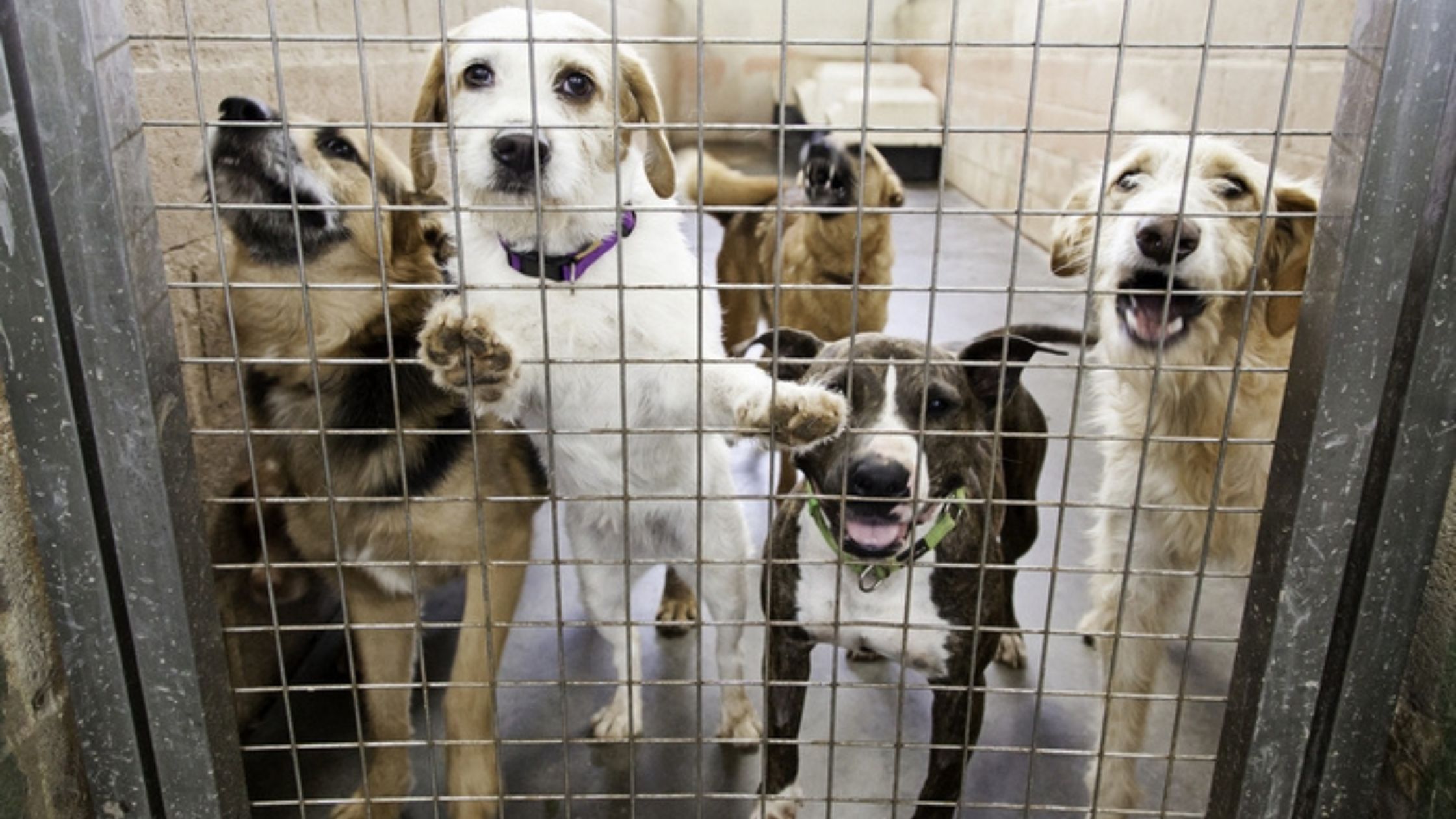Stray dogs are dogs that live on the streets or in the wild without a human owner or caretaker. They may be abandoned, lost, or born in these conditions. They face many challenges and dangers, such as hunger, disease, injury, abuse, and euthanasia. These are some of the reasons why to help stray dogs!

According to the W.H.O,
there are about 200 million dogs
on the streets worldwide!
WHY TO HELP STRAY DOGS?
Helping stray dogs is a compassionate and humane act, but also a beneficial one for both dogs and humans. By helping stray dogs, we can improve their health, welfare, and quality of life! Doing this as well can reduce the risks and problems they pose to public health, safety, and environment.
In this article, we will explain why and how to help stray dogs, based on the following reasons:
Public health concerns
Stray dogs can pose a risk to public health by transmitting diseases such as rabies, leptospirosis, and cat scratch fever. Rabies is a fatal viral disease that affects the nervous system of mammals, including humans. It is estimated that about 59,000 people die from rabies every year. This is mostly in Asia and Africa, and about 99% of human cases are caused by dog bites.
Leptospirosis is a bacterial disease that affects the kidneys, liver, and other organs of humans and animals. It is transmitted by contact with urine or water contaminated by infected animals, especially rodents and dogs. Cat scratch fever is a bacterial disease that causes fever, swollen lymph nodes, and skin lesions in humans. It is transmitted by scratches or bites from infected cats or dogs.
Public safety
Stray dogs can pose a risk to public safety as they may bite or chase people out of fear, aggression, or territoriality. They may also cause traffic accidents by running onto roads or chasing vehicles. They may also harm livestock, wildlife, or pets by hunting or fighting them.
According to a study in India, about 17.4 million people were bitten by dogs in 2015! About 20% of them were bitten by stray dogs. According to another study in China, about 1.8 million people were injured by dog bites in 2013! About 62% of them were injured by stray dogs.
Social responsibility
Stray dogs are a social responsibility and have been in a relationship with humans for more than 15,000 years. They deserve our respect and care as living beings that share our planet and our communities.
Dogs are loyal and loving companions for humans who adopt them or provide them with shelter. Helping stray dogs can also foster a culture of kindness and compassion among people. Especially children and youth who can learn from positive interactions with animals.
Cruelty to animals
Cruelty to animals is not done. Stray dogs suffer from many forms of cruelty and abuse from humans who neglect, abandon, harm, or kill them. They may also suffer from natural disasters, environmental hazards, or conflicts with other animals. Helping stray dogs can prevent or reduce their suffering and provide them with dignity and justice.
Sterilization drive
Implementing a thoughtful and safe sterilization drive can help control the stray dog population. That can also prevent unwanted births of puppies that may end up on the streets or in shelters.
Sterilization can also improve the health and behavior of stray dogs by reducing their risk of reproductive diseases and aggression. Sterilization can also reduce the competition for food and resources among stray dogs and other animals.

HOW TO HELP STRAY DOGS?
There are many ways to help stray dogs.
Here are some of the most common and effective ways to help stray dogs:
Adopt or foster
Best ways to help stray dogs is to adopt or foster them if you have the space, time, and money.
Adopting means giving a permanent home to a stray dog that you choose from a shelter or rescue organization. Fostering means providing a temporary home until they find a permanent home or are ready for adoption. By doing this, you can save their life, improve their health and happiness, and enrich your own life as well.
Donate or volunteer
Another way to help stray dogs is to donate or volunteer for organizations that work for their welfare. Donating means giving money or goods to support the activities and expenses of these organizations.
Volunteering means giving your time or skills to assist these organizations in various tasks.
Easy and fun tasks such as feeding, cleaning shelters, walk the dogs and enjoy in the playtime.

UNVEILING THE TRUTH ABOUT STRAY DOGS: FACTS, CHALLENGES AND COMPASSIONATE SOLUTIONS
Stray dogs, often seen wandering streets and public areas, are an unfortunate reality in many communities. Understanding the facts surrounding these animals, the challenges they face, and the solutions available is crucial for addressing this issue effectively.
Facts About Stray Dogs
- Overpopulation Concerns: Stray dogs contribute significantly to the overpopulation of dogs globally. Their population can surge due to abandonment, uncontrolled breeding, and inadequate spaying/neutering measures.
- Behavioral Adaptations: Stray dogs often exhibit various behavioral adaptations to survive, including forming packs or colonies, scavenging for food, and seeking shelter in abandoned buildings or public spaces.
- Health Challenges: Lack of regular medical care and exposure to harsh environments can lead to various health issues among strays, including injuries, diseases, and malnutrition.
- Community Impact: Stray dog populations can impact communities by posing safety concerns, creating nuisance, and sometimes resulting in conflicts with residents.

Challenges Faced by Stray Dogs
- Lack of Resources: Many stray dogs lack access to regular food, clean water, shelter, and necessary medical care due to their homeless status.
- Population Control: Controlling the overpopulation of stray dogs is a significant challenge. Without proper spaying and neutering measures, the population can grow rapidly.
- Human-Animal Conflict: Stray dogs can sometimes cause conflicts with humans due to fear, aggressive behavior, or instances of bites and attacks, leading to safety concerns.
- Welfare and Care: Stray dogs often face neglect, cruelty, or harsh conditions, affecting their overall welfare and well-being.
Compassionate Solutions
- Spaying and Neutering Programs: Implementing widespread spaying and neutering programs for strays can effectively control the population, reducing the number of homeless dogs.
- Shelters and Rescue Organizations: Supporting or volunteering at shelters and rescue organizations can provide a safe haven for strays, offering medical care, rehabilitation, and the chance for adoption.
- Community Education: Educating communities about responsible pet ownership, the importance of vaccinations, and the significance of spaying/neutering can help prevent the abandonment of pets.
- Adoption and Foster Programs: Encouraging adoption and fostering of stray dogs helps them find loving homes, reducing the stray population and providing a better life for these animals.
- Collaboration with Authorities: Working alongside local authorities to create and implement humane and effective strategies for managing stray dog populations is vital.
Contact us if you want to get in touch with a shelter
Stray dogs face a multitude of challenges, from overpopulation to health concerns and community conflicts. By implementing compassionate solutions such as spaying and neutering programs, providing shelters, education, and promoting adoption, communities can work towards ensuring a better life for these animals and reducing the negative impacts of stray dog populations on society. Through a collective effort and understanding, strides can be made to alleviate the challenges faced by stray dogs and create a more harmonious environment for both animals and communities.
End animal cruelty – Inform yourself more at Humane Society Organization









